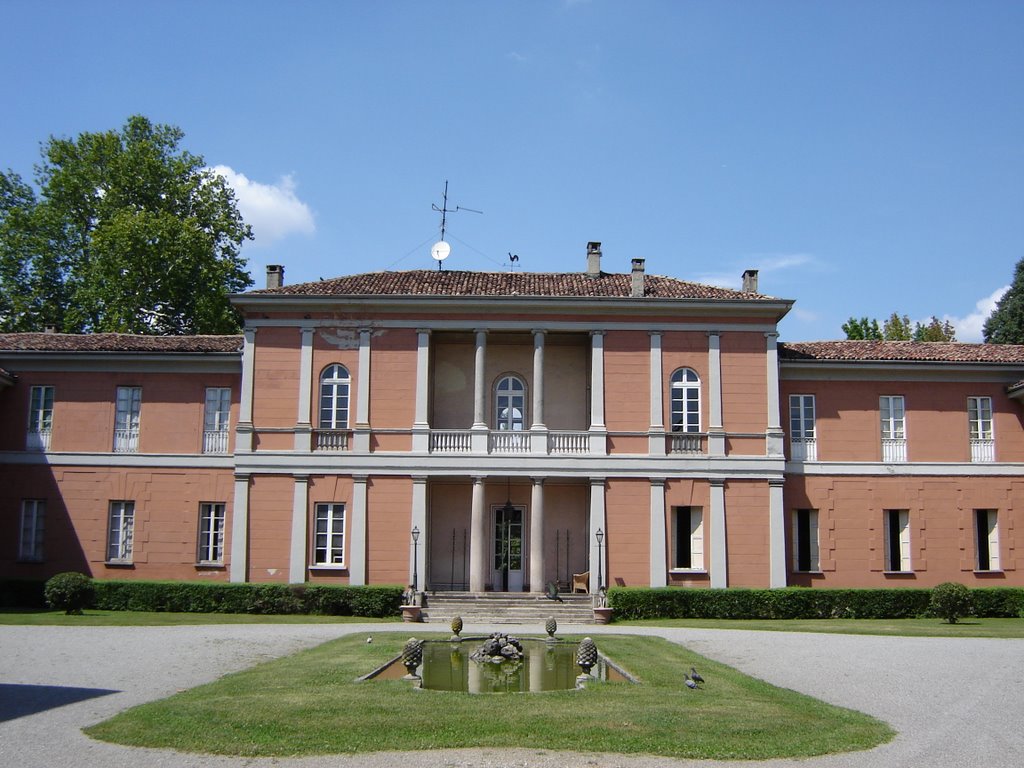
Villa Manzoni Garden
This post is also available in:
 Italiano (Italian)
Italiano (Italian)
Villa Manzoni was owned by the family of the Counts Imbonati, who built the oldest part of the building at the end of the 1600s. When Carlo Imbonati died in 1805, the house and all the land were inherited by Giulia Beccaria, the mother of the Italian poet and novelist Alessandro Manzoni. When the Manzonis moved from Paris to Brusuglio in 1807, they found the building in very poor and neglected conditions, so they decided to restore and renovate it. Between 1811 and 1818, Alessandro Manzoni personally worked with architect Gottardo Speroni to build a central structure connecting the two existing buildings; thus, the villa acquired the French style look which can be still seen today.
From 1810 to 1820, Alessandro Manzoni dedicated himself to the creation of the large park, following his great passion for plants and botany; he personally took care of planting several species in the vineyard and the garden, asking Claude Fauriel (a French critic and philologist, 1772-1844) for some seeds chosen from the very collections of several Paris nurseries.
THE PLANTS
Alessandro Manzoni used to experiment a lot with plants and seeds: such ingenuity can still be enjoyed by visitors who can admire some peculiar hydrangeas (Hydrangea hortensis, and Hydrangea macrophylla – “Annabelle” and “Alberta” varieties – and Hydrangea quercifolia), mostly never seen before in Lombardy.
Other novelties include black locusts (Robinia pseudoacacia), tulip trees (Liriodendron tulipifera), several magnolias, Japanese maples (Acer japonicum), several bignonias, southern catalpas, American sweetgum (Liquidambar styraciflua), small-leaved limes (Tilia cordata), Hibiscus spp., and Cedrus deodara.
As a true enthusiast, Manzoni introduced another botanical novelty: the sassafrass (Sassafras albidum), an Indian-American plant that had arrived in Italy in 1630.
There are still many trees originally planted by the Italian novelist (of the approximately 950 specimens allegedly planted back then). They can be seen on the romantic Viale dei Platani which connects the studio to the nearby Seveso River, a catalpa, an oak the yew grove.
As a matter of fact, the garden has been recently restored, enhancing its historic plants, while returning them their original appearance as much as possible.
Worth knowing:
Manzoni loved experimenting: he planted cotton, with little success, and he loved announcing his friends that soon he could treat them to the very coffee grown in his garden!
It is said that Manzoni was sitting on the outstretched trunk of his catalpa when he was notified of Napoleon’s death and right there, he quickly wrote his famous “5 Maggio” ode.
This post is also available in:
 Italiano (Italian)
Italiano (Italian)
Contatti
Via Cardinale Borromeo,16 - Cormano(MI)
info@villa-manzoni.it



